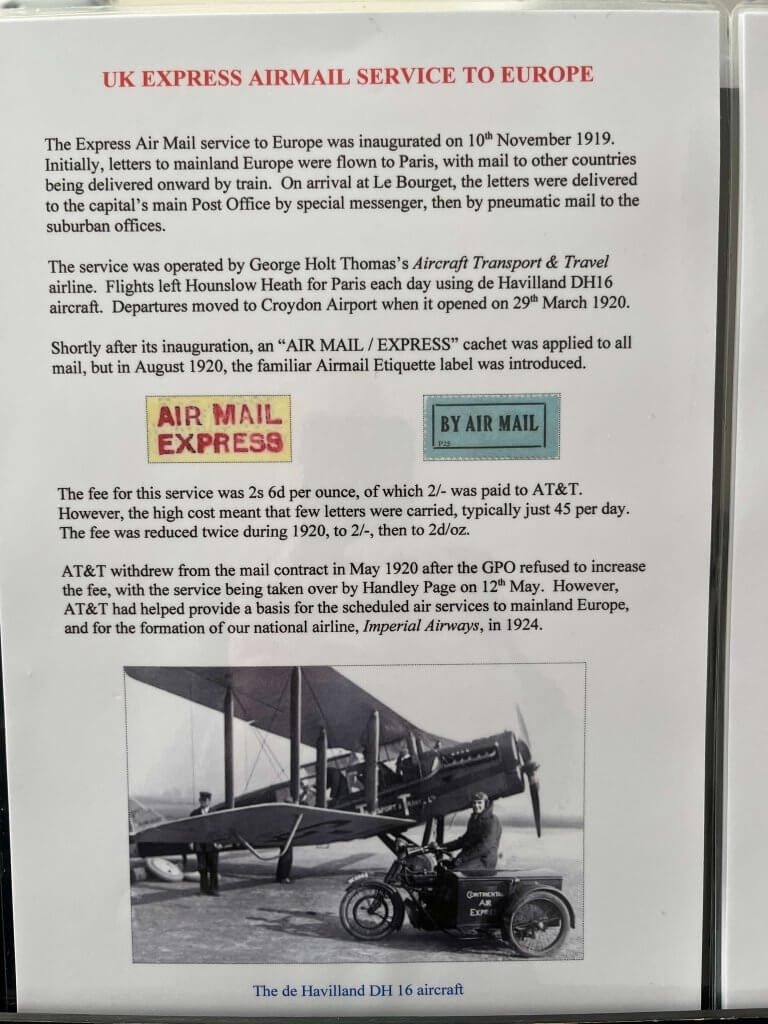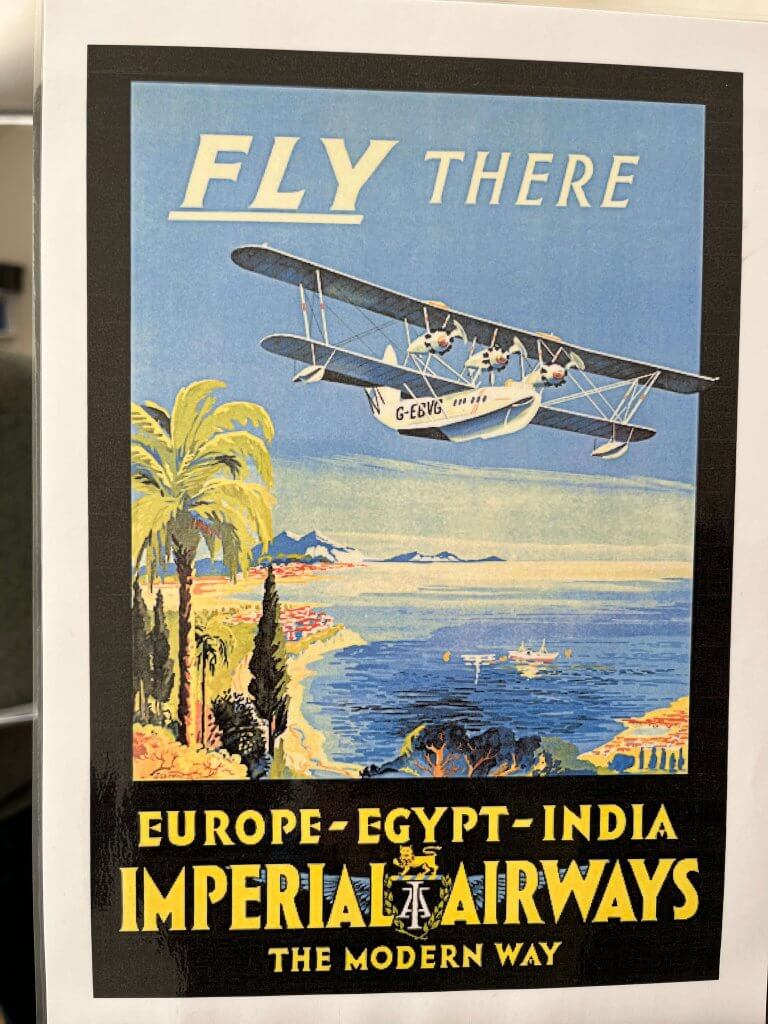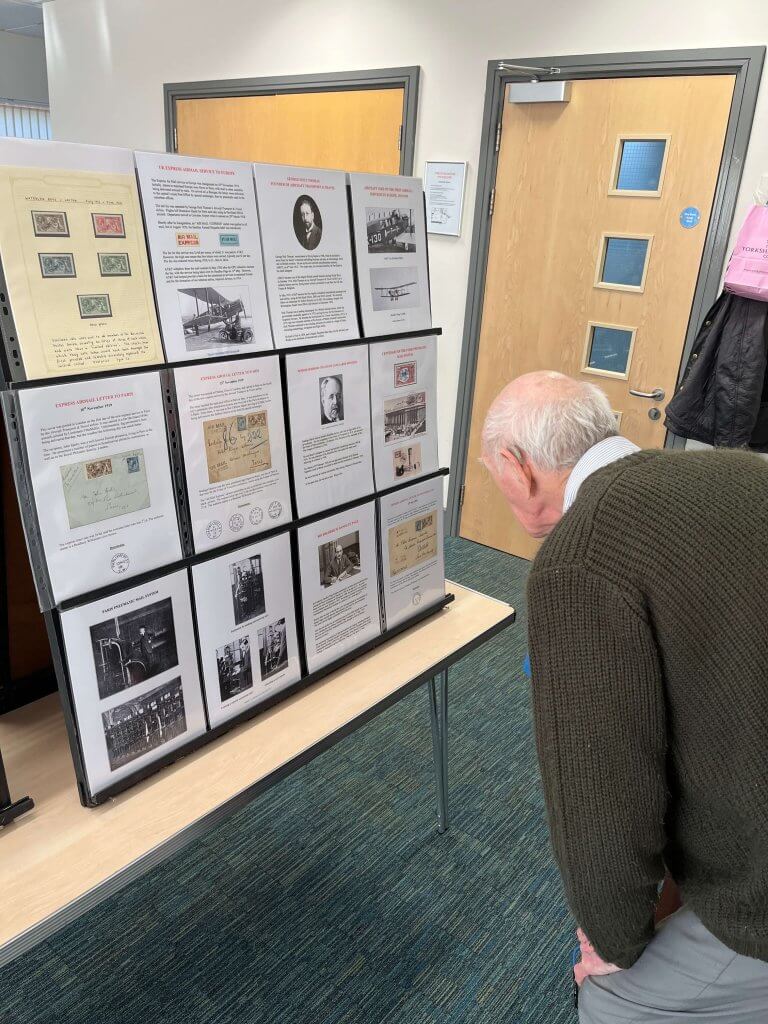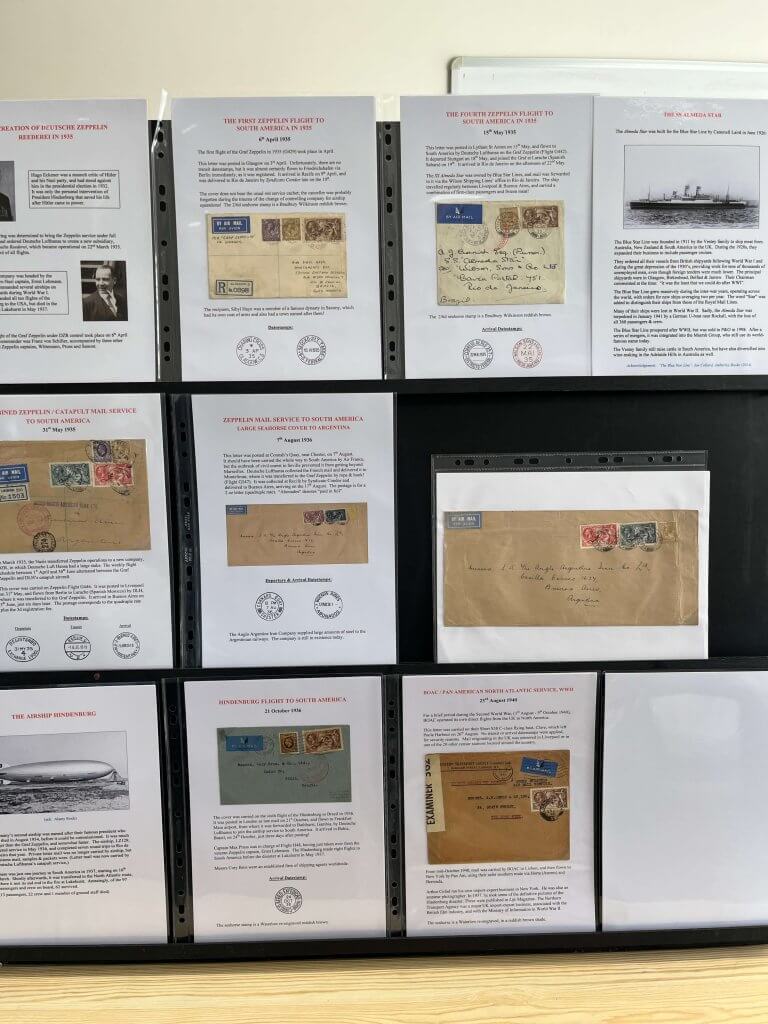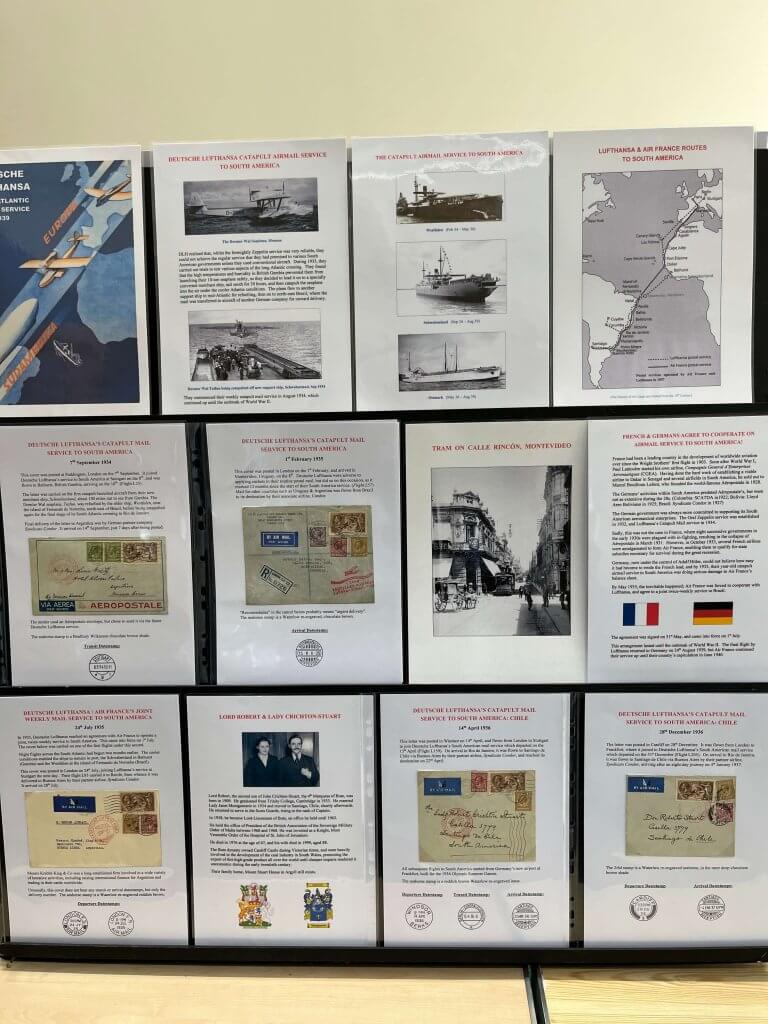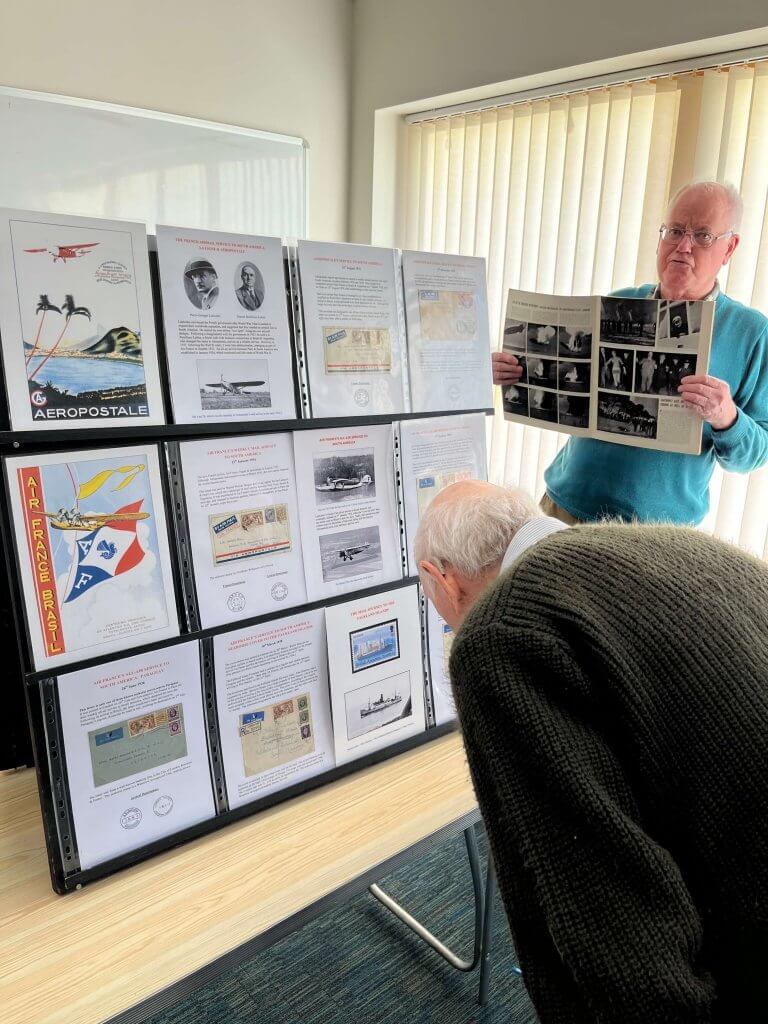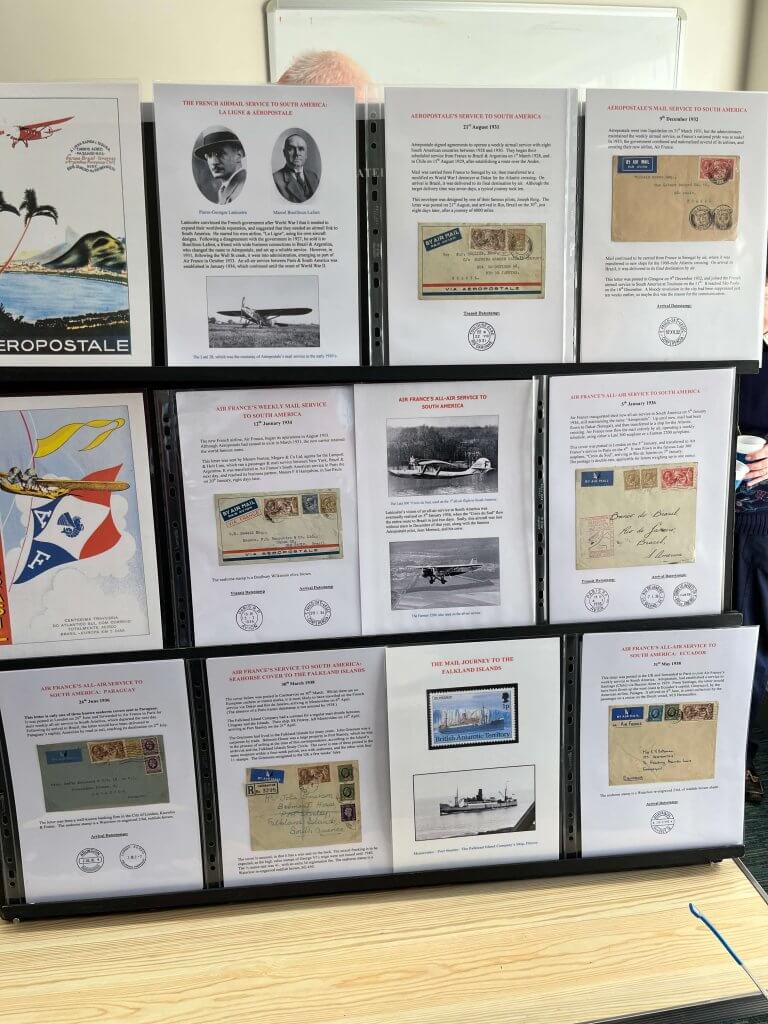Travels with a Seahorse (without getting wet!)
The Chairman’s evening talk was a superb display from Nick Rolfe of Seahorse covers, which he used to explain the development of the first airmail routes from Britain and Europe to the rest of the world.
Nick described how Britain got into aviation and how, from there, the ability to carry mail developed. He described the development of Imperial Airways and showed early covers, all of which bear a Seahorse stamp, that traveled from the UK to destinations around the world. We were shown covers to rare destinations such as India and Palestine and thereafter to Africa including Rhodesia, Sudan, South Africa, and Kenya. He then showed covers to even further destinations including New Zealand and Australia, including the Kingsford Smith Christmas Flight in 1931.
He then went on to talk about the trans-Atlantic flights which, at that time, no aircraft was capable of flying in one go, however, in 1939 someone did and we were shown the first flight cover to Newfoundland. Once aircraft had been developed to cover these distances they then extended to South America and we were shown covers to Columbia, Peru, Panama, Antigua, Miami, and Venezuela.
Part two of the display was about a parallel development in airmail services from Germany and France to parts of the world. This included Zeppelin covers, which took just three days from Germany to Brazil, French flights to South America, and their development to be able to cover the distance to South America in one go. At the same time, the German airlines were approaching the problem from a different perspective and were using catapult mail, with planes launched from ships.
The display closed with an original copy of Time magazine showing the Hindenberg disaster and a vote of thanks was given by Brian Lythgoe.



